P01-2020-Bluetooth reprobox
Links
Konceptom projektu je vytvorenie vlastného bluetooth reproduktoru s pridanou funkcionalitou v podobe svetelných efektov.
Členovia tímu: Adriana Ághová, Zuzana Cukerová a Viliam Villár
Motivácia
Internetové obchody ponúkajú široký výber reproduktorov. Niektoré ľuďom umožňujú len počúvať hudbu iné pinášajú aj ďalšie pridané hodnoty. Jedným z týchto rozšírení sú svetelné efekty. Ako tímu sa nám myšlienka vylepšeného reproduktoru veľmi zapáčila. Reproduktor s pridanými svetelnými efektami taktiež považujeme za reálne využiteľný produkt. Myslíme si, že v aktuálnej dobe je po takomto produkte aj veľký dopyt. Veríme teda, že náš projekt môže byť kvalitným návodom ako si takýto reproduktor zostrojiť doma, či už v klasickej verzii alebo s pridanými svetelnými efektami.
Cieľ
Vytvorenie funkčného reproduktoru s možnosťou prehrávania hudby pomocou blutooth. Súčasťou reproduktoru by mali byť aj led svetlá, ktoré by bolo možné nastaviť za pomoci vytvorenej mobilnej aplikácie. Aplikácia používateľovi bude ponúkať rôzne možnosti nastavenia svetiel ako napríklad zvolenie počtu svietiacich letiek na základe hudby alebo tiež zvolenie menenia farieb na základe hudby.
Opis riešenia
V prvej fáze bolo potrebné si zozbierať nápady a myšlienky jednotlivých členou tímu. V tejto fáze prebiehali aktívne brainstormingy, ktorých výstupom bol prvotný návrh reproduktora.
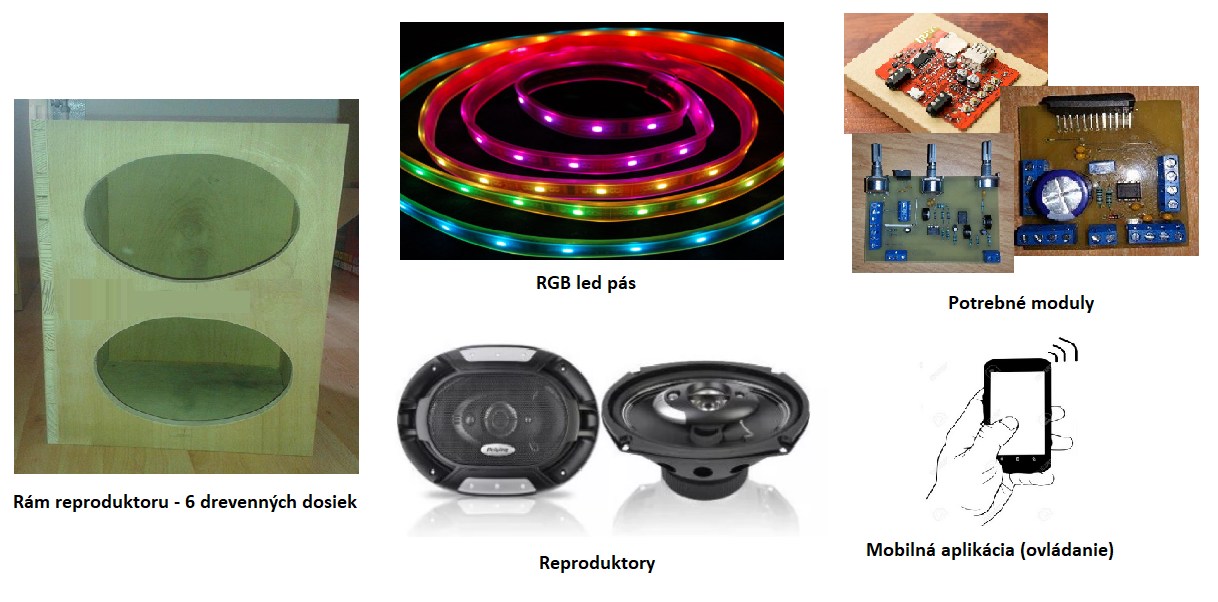
Na obrázku je možné vidieť základné časti reproduktora medzi, ktoré patrí 6 drevených dosiek predstavujúcich konštrukciu reprobedne. Ďalej samotné reproduktory, ktoré bude potrebné osadiť do skonštruovanej bedne a následne moduly, ktoré budú zabezpečovať všeobecnú funkcionalitu.
Jednou z hlavných požiadaviek po funkcionálnej stránke je potreba zabezpečenia komunikácie reproduktora s mobilným zariadením. Túto funkcionalitu zabezpečíme pomocou bluetooth modulu.
Bezdrôtová technológia BLUETOOTH je celosvetová štandardná forma bezdrôtovej komunikácie. To znamená, že elektronika vybavená bluetooth konektivitou môže navzájom medzi sebou komunikovať v dosahu cca 10 metrov. Naskytuje možnosť prenášať dáta, hudbu, alebo obrázky bez akéhokoľvek fyzického kontaktu. V našom projekte bude konkrétne využitý rádiový prenos hudby. Systém Bluetooth na tento prenos využíva nelicencované pásmo ISM (Industrial, Scientific, Medical), určené pre priemyselné, vedecké a lekárske aplikácie. V USA a v Európe (okrem Francúzska a Španielska) sa toto pásmo rozkladá medzi 2400-2483,5 MHz a v Japonsku medzi 2471-2497 MHz.
Ostatné funkcionality zaoberajúce sa nastavovaním RGB led pásu sú implementované v ESP32 prostredníctvom jazyka Arduino. ESP32 je duálna vývojová doska s režimami bluetooth a wifi. Pre celkovú funkcionalitu bluetooth reproboxu boli pravdaže potrebné aj ďalšie iné komponenty. Základnú high level architektúru reproiboxu je možné vidieť na obrázku nižšie.
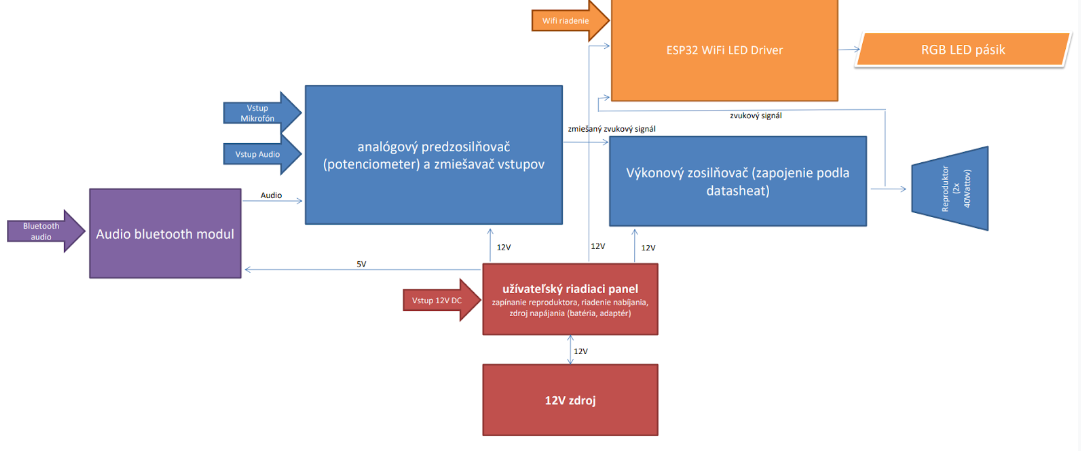
Implementácia
V rámci implementácie časti projektu týkajúceho sa webového servera sme sa rozhodli pre využitie ESP32 ako prístupového bodu. Práve takéto nastavenie nám umožní pripojenie sa k MusikBoxu pomocou ľubovoľného zariadenia s funkciou WIFI, bez potreby pripojenia ESP32 k bezdrôtovému smerovaču (väčšina projektov).
Implementácia webovej stránky poskytuje svojim používateľom niekoľko funkcionalít pre ovládanie farebných efektov spojených s prehrávaním hudby na našom MusikBoxe.
- Provou z funkcionalít je nastavenie farby LED pásika.
Hoci počet rozsvietených LED svetiel závisí v každom prípade od veľkosti zvukového signálu, používateľ má možnosť voľby farby akou bude LED pásik rozsvietený. Používateľovi ponúkame širokú škálu pestrých farieb, ktoré zážitok z počúvania hudby dotvoria. Samozrejme, používateľ je schopný si túto farbu zmeniť v akomkoľvek bode prehrávania pesničky, a to len kliknutím na inú z ponúkaných farieb.
- Druhou funkcionalitou je automatické menenie farieb.
Pre tých používateľov, ktorí radi nechajú voľbu farieb na náhodu, sme vytvorili možnosť automatického menenia farieb. Po zvolení tejto možnosti sú farby zvolené ako náhodné r, g, b hodnoty, ktorých hodnota sa však pri každom dosiahnutí maxima mení. To znamená, že farba sa mení pri silnej hudbe a teda môžeme povedať, že reaguje na hudbu.
- Treťou funkciou je ovládanie rozsahu
ESP32 sme si vybrali tiež kvôli možnosti spracovania analógového signálu. Čítanie analógovej hodnoty z ESP32 znamená, že môžete merať rôzne úrovne napätia medzi 0 V a 3,3 V. Namerané napätie sa potom priraďuje k hodnote medzi 0 a 4095, kde 0 V zodpovedá 0 a 3,3 V zodpovedá 4095. Keďže my chceme využívať plný rozsah LED svetiel aj v prípade, kedy je vstupné napätie menšie, vytvorili sme funkcionalitu, kedy si používateľ môže priamo, využitím webovej stránky, tento rozsah meniť.
Zaujímavou funkcionalitou je tiež takzvané smoothovanie. Keďže načítavanie vstupných hodnôt prebieha každých 5ms, častokrát ma vstupné napätie hodnotu 0V. To znamená, že LED svetla by, hoci na mali okamih, zhasínali a vytváralo by to rušivý efekt. Naša funkcia si tak drží veľkosť posledného nameraného vstupného napätia o určitej hodnote rôznej od 0 po dobu 50ms alebo kým na vstup nepríde ďalšia hodnota rôzna od 0. Hoci táto doba nie je dlhá, zabraňuje blikaniu LED svetiel a vytvára tak príjemný používateľský zážitok.
Testovanie
Fáza testovania prebiehala vždy po implementácii jednotlivých ucelených častí. Testovala sa postupne funkcionalita komunikácie reproboxu so zaradiením a následne aj funkcionalita spojená s pridanými svetelnými efektami.
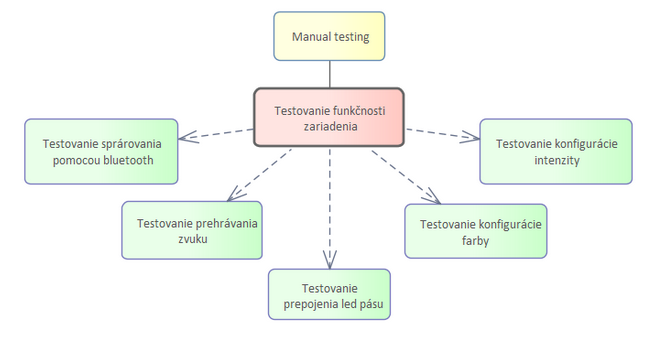
Ukážky konštrukcie reproboxu
Na nasledujúcich obrázkoch je zachytený proces konštrukcie bluetooth reproboxu.
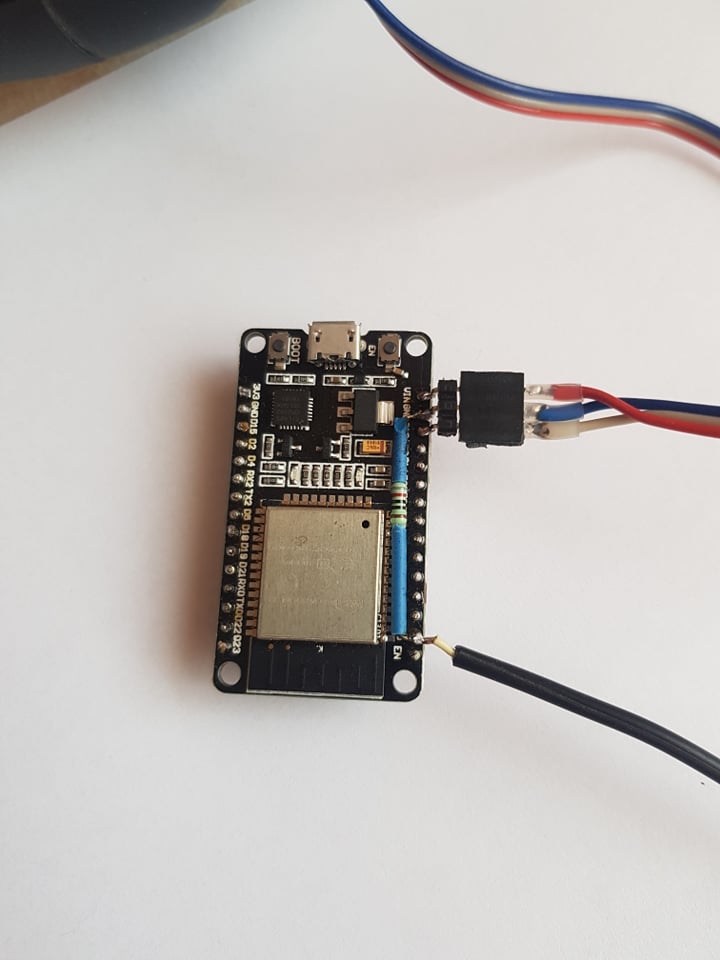
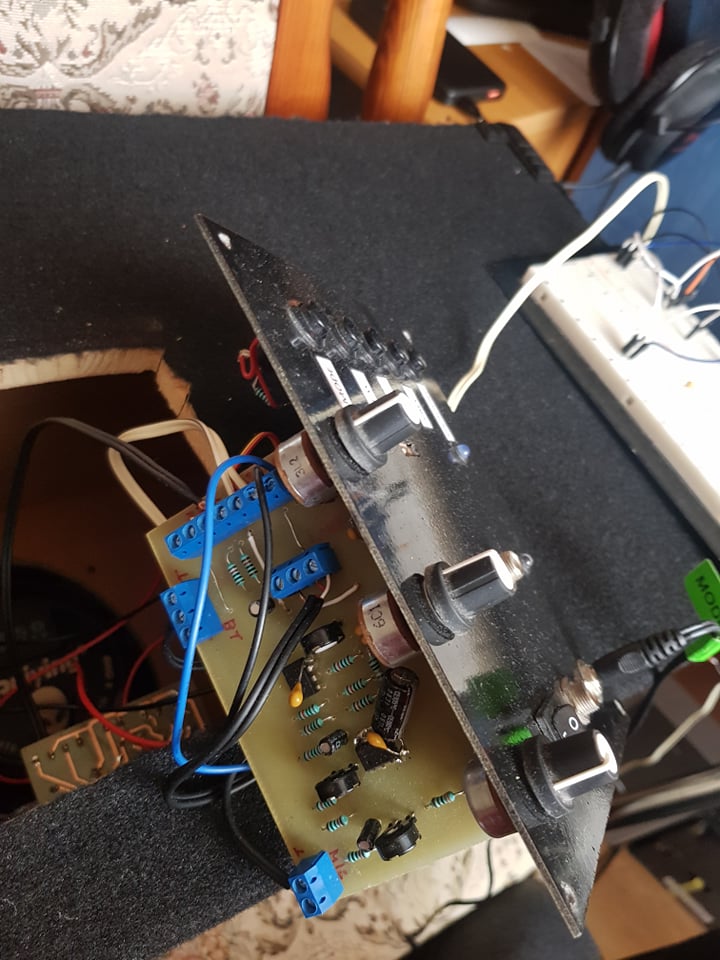
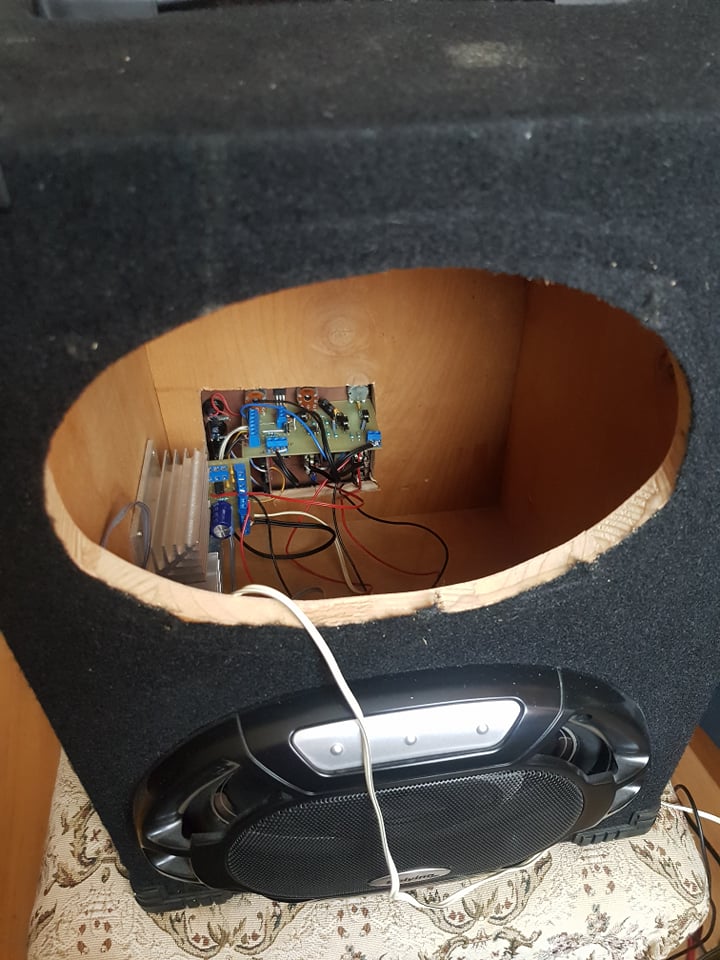
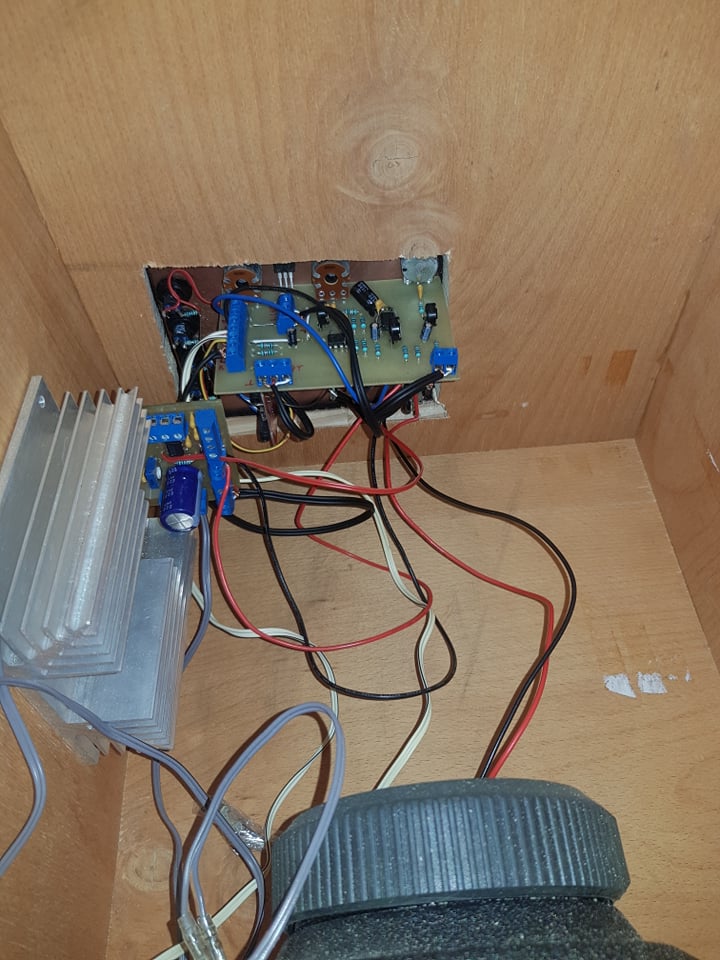
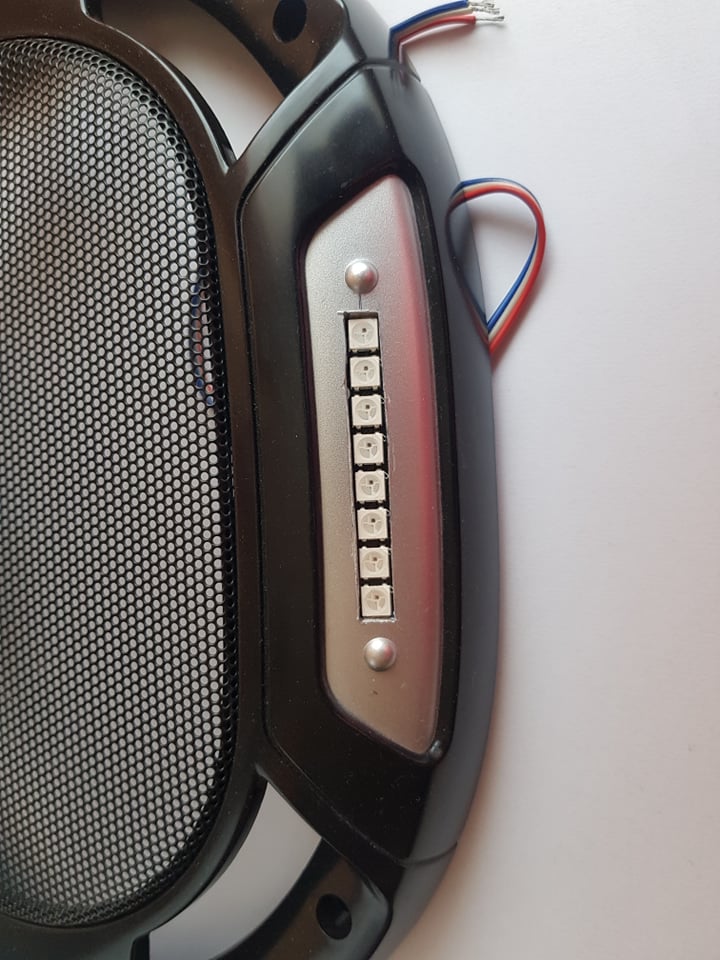
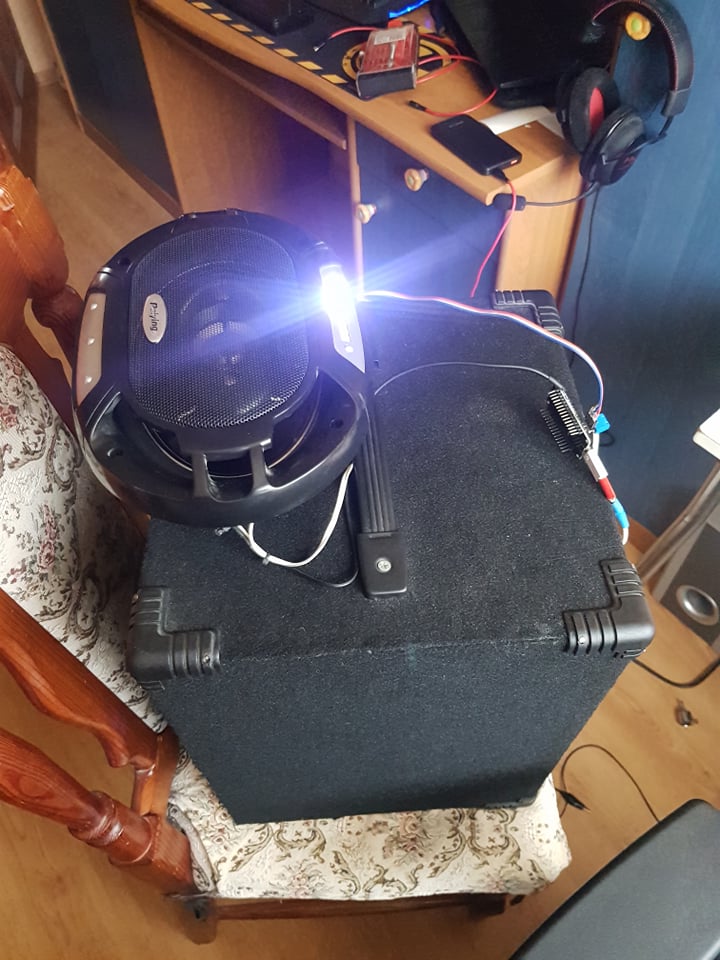
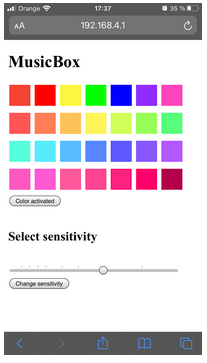
- Návštevy: 985
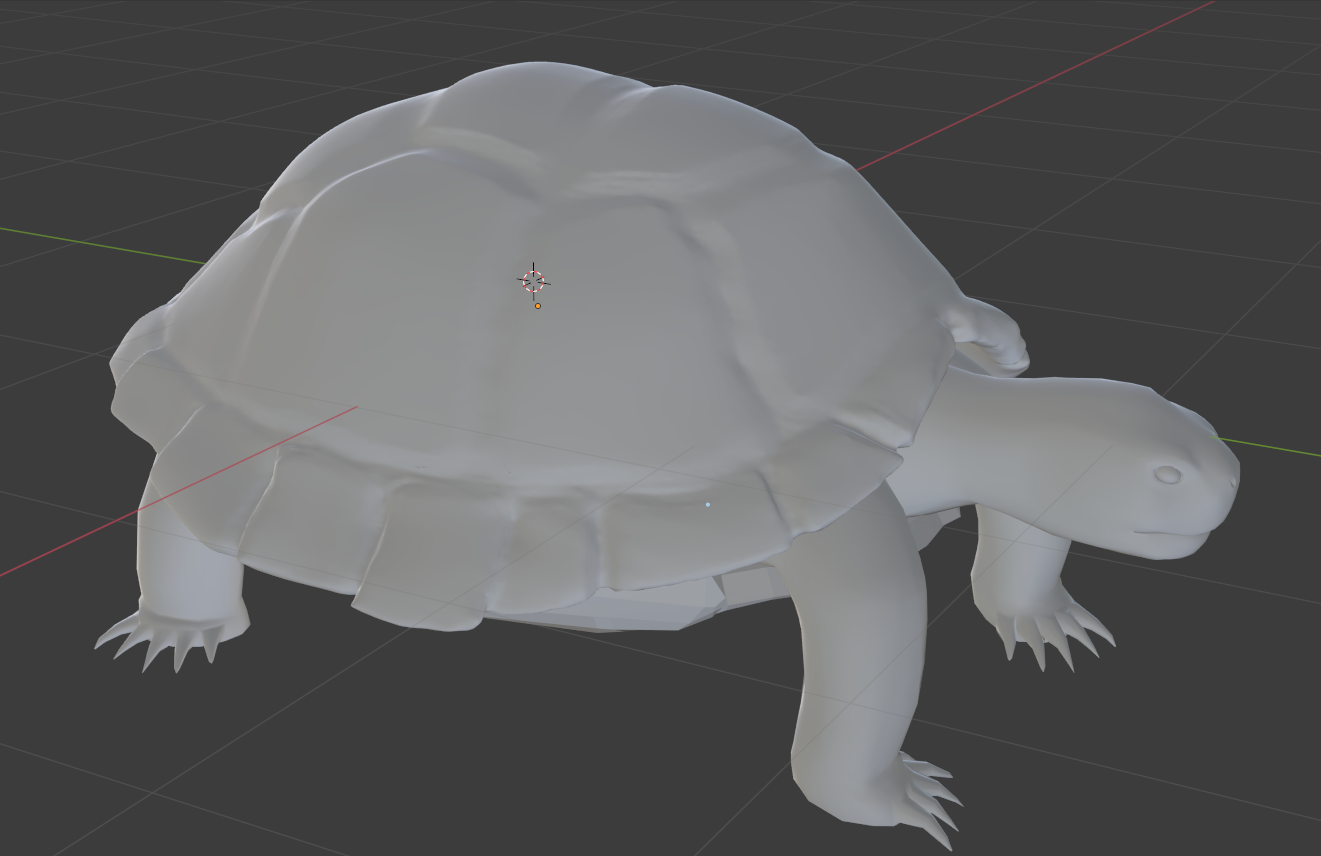
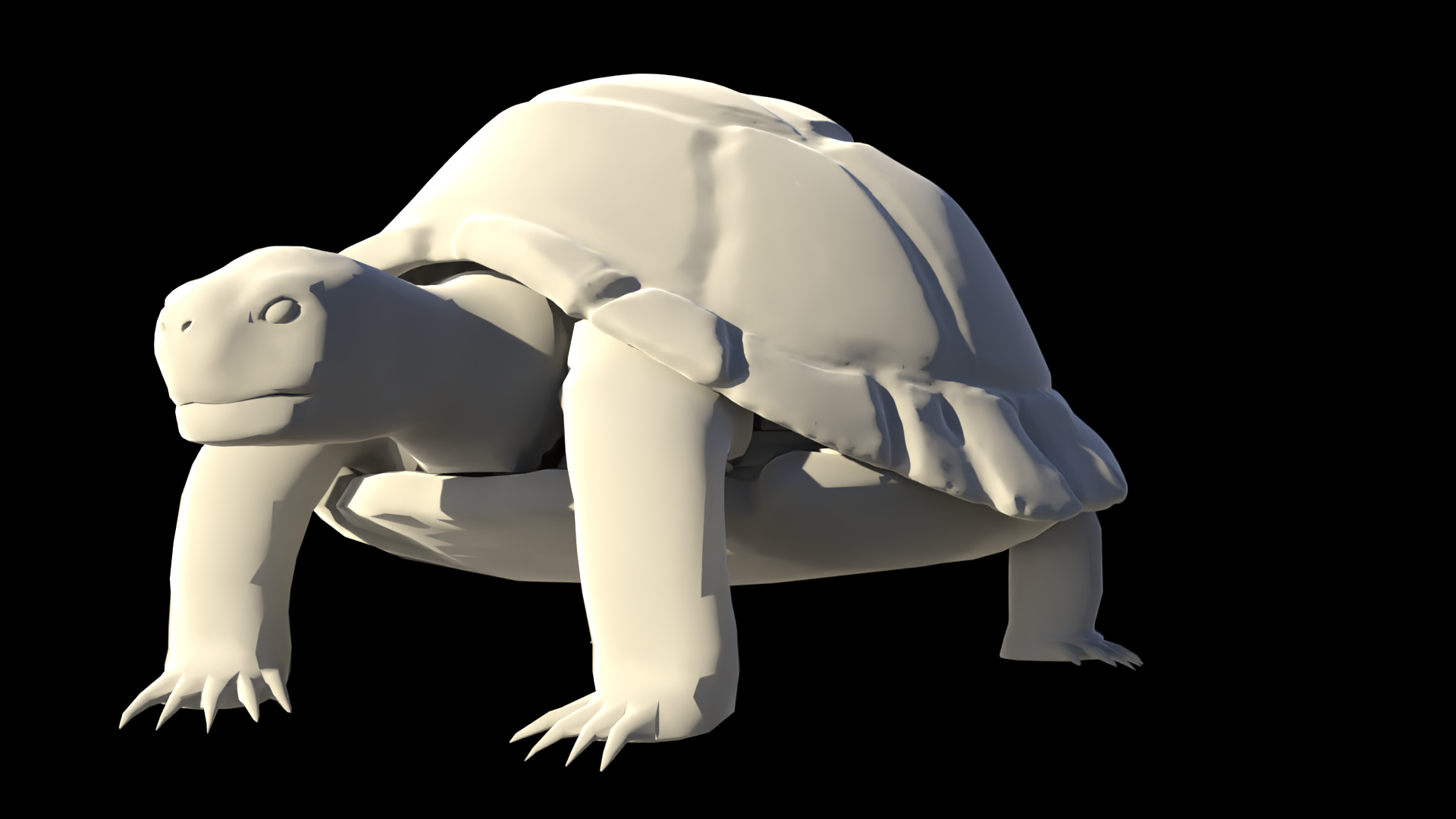
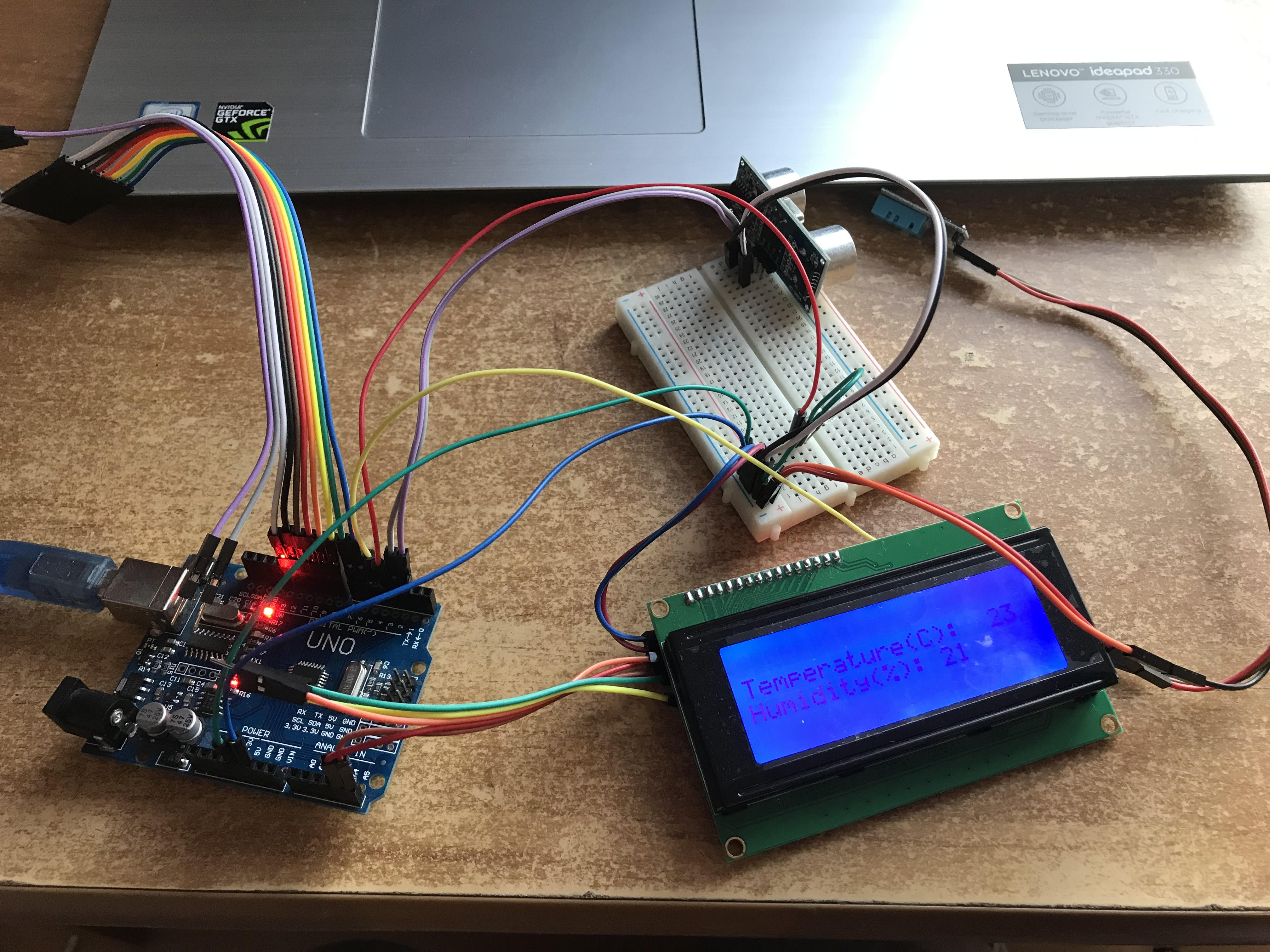
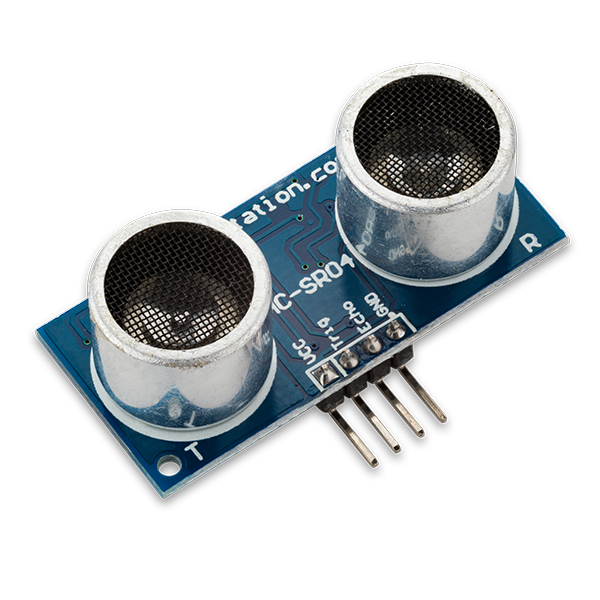
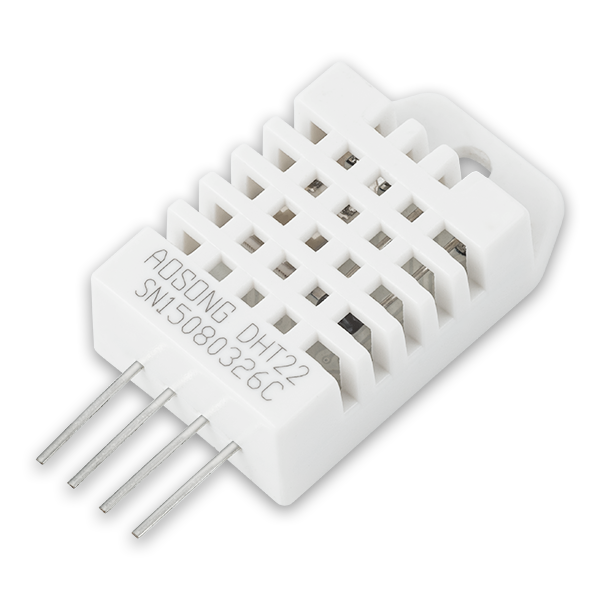
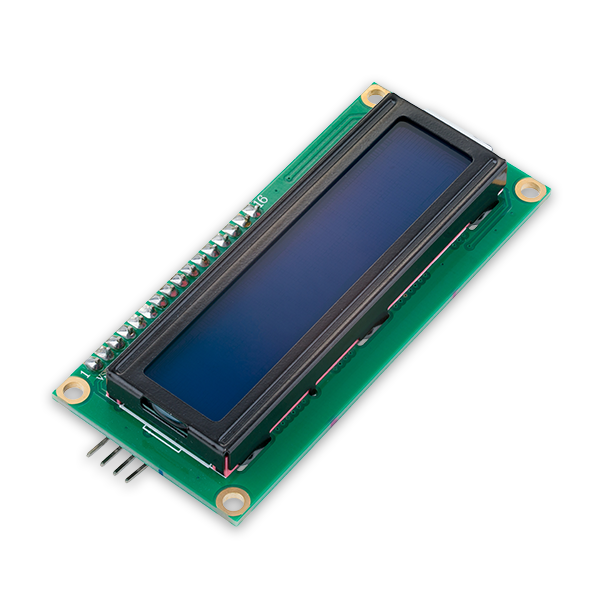
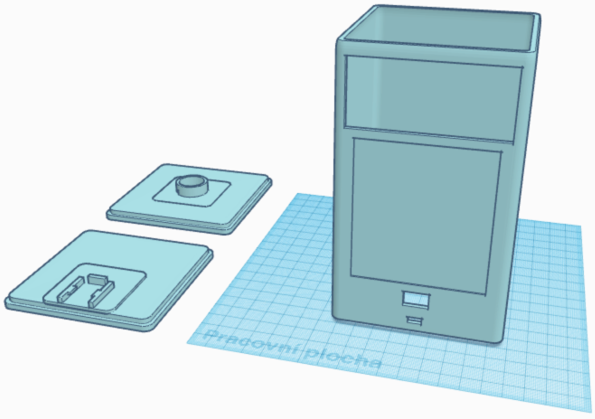
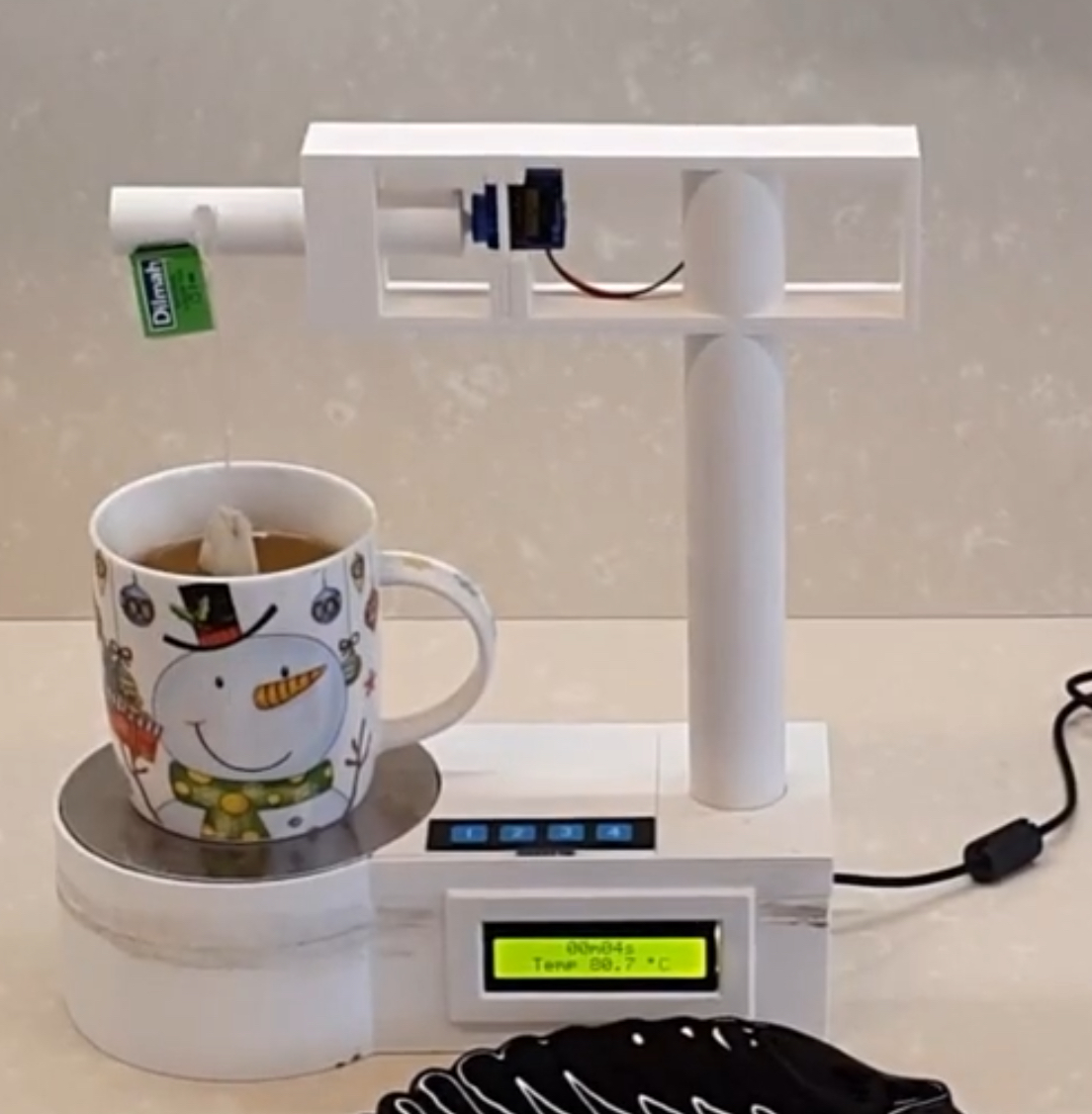
 2023/2024
2023/2024